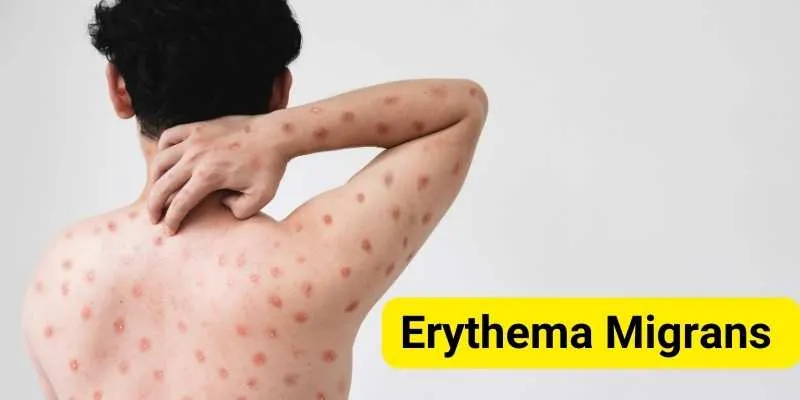Guide To The Causes And Symptoms Of Kwashiorkor
Kwashiorkor is a severe form of malnutrition that predominantly affects young infants, especially in regions experiencing food shortages. This condition can occur even when calorie intake is sufficient, as it results from a severe protein deficiency. Serious medical issues, such as bloated bellies, thin limbs, skin problems, and potentially fatal outcomes, can arise from this disorder. Many households in underdeveloped areas may not fully grasp the severity of protein deficiency.
Early detection and prevention of kwashiorkor rely on understanding its causes and symptoms. With the right knowledge, caregivers can take steps to protect children from this debilitating illness and provide better nutrition. This article explores what kwashiorkor is, why it occurs, and how to recognize its warning signs, empowering communities to nurture stronger, healthier children.

What Is Kwashiorkor?
Kwashiorkor is a severe form of protein-energy malnutrition primarily affecting young children in developing countries. It occurs when the body lacks sufficient protein, despite adequate calorie intake from carbohydrates. Protein is a crucial nutrient for growth, tissue repair, and the proper functioning of bodily systems. Without enough protein, the body cannot build or maintain muscles, organs, or the immune system. This disorder is most common in areas where food insecurity and poverty limit access to protein-rich foods such as meat, eggs, dairy, and legumes.
Children often rely on carbohydrate-rich diets, including rice, corn, or cassava, which are low in protein. Consequently, the body begins to break down its tissues to meet energy demands, leading to muscle loss, edema, and other serious medical complications. If left untreated, kwashiorkor can result in severe infections, organ failure, and potentially fatal outcomes. Early identification and proper nutrition are critical for survival and recovery.

Causes of Kwashiorkor
Below are the primary causes of kwashiorkor, contributing to protein deficiency and malnutrition in affected individuals:
- Protein Deficiency: A diet primarily composed of rice, maize, or cassava lacks adequate protein. While these foods provide energy, they are deficient in essential nutrients. Without sufficient protein, the body cannot build or repair tissues.
- Poverty and Food Insecurity: Poverty limits access to nutritious foods. Families in impoverished areas may struggle to afford protein-rich foods like meat, eggs, or beans. Natural disasters or drought-induced food shortages increase the risk of kwashiorkor.
- Poor Weaning Practices: Introducing low-protein diets or delaying solid foods can result in kwashiorkor. Once weaned, infants require a balanced diet. Poor weaning practices can lead to protein deficiency in young children.
- Infections and Diseases: Frequent infections can exacerbate malnutrition. Diseases like parasitic infections or diarrhea impair the body’s ability to absorb nutrients, contributing to or worsening kwashiorkor.
- Lack of Nutrition Education: Many families may not understand the importance of a balanced diet. Caregivers without adequate knowledge may fail to include sufficient protein in meals, which can be prevented with nutrition education.
Symptoms of Kwashiorkor
Below are common symptoms of kwashiorkor, which can aid in identifying and diagnosing this severe malnutrition condition:
- Swollen Belly (Edema): A swollen belly is one of the most noticeable signs. The body swells due to fluid accumulation, resulting from protein loss that disrupts the body’s fluid balance.
- Thin Limbs and Muscle Wasting: Children with kwashiorkor may have extremely slender limbs and legs. In the absence of protein, the body breaks down muscles for energy.
- Skin and Hair Changes: Kwashiorkor results in dry, cracked, and peeling skin. The skin may develop dark or light spots. Hair may become thin, brittle, and lose color.
- Irritability and Behavior Changes: Young children may become very irritable or lethargic. Nutrient and energy deficiencies affect mood and brain function.
- Stunted Growth and Weight Loss: Children with kwashiorkor may experience stunted growth. They may be shorter and weigh less than average children of their age.
- Weakened Immune System: A weakened immune system increases susceptibility to infections. Children may experience diarrhea, frequent colds, or other illnesses.
- Fatigue and Weakness: Without protein, individuals become extremely weak and fatigued. Children may lack the energy to move or play.
- Enlarged Liver: Kwashiorkor can cause liver enlargement due to inadequate nutrition leading to fat accumulation in the liver.
Treatment of Kwashiorkor
Treating kwashiorkor involves a gradual and deliberate approach to restoring nutritional balance. Initially, stabilizing the child and addressing any immediate medical issues, such as infections or dehydration, is the priority. Refeeding should commence carefully with easily digestible foods that are high in calories and protein. To prevent overwhelming the fragile body, protein intake should be gradually increased.
Including protein-rich foods like milk, eggs, beans, and meat helps rebuild muscle mass and tissues. In addition to protein, providing essential vitamins and minerals addresses deficiencies. Doctors may recommend supplements to boost immune strength and accelerate recovery. Treating underlying infections with appropriate medications is crucial, as illnesses can further impair nutrient absorption.
Long-Term Effects of Kwashiorkor
Untreated kwashiorkor can have long-lasting effects on a child’s health. Growth and developmental stunting can lead to lifelong physical and cognitive challenges. Children with untreated kwashiorkor may face learning difficulties and might not achieve developmental milestones or reach their full height. Their weakened immune systems increase susceptibility to infections and illnesses, complicating recovery.
Chronic malnutrition can also cause permanent damage to vital organs such as the kidneys and liver, exacerbating long-term health issues. In severe cases, the inability to fight infections or absorb nutrients can result in mortality. Additionally, kwashiorkor can negatively impact mental health, leading to emotional and behavioral problems. Early detection and treatment are crucial to preventing these lasting effects.
Conclusion:
Kwashiorkor is a serious and potentially life-threatening condition caused by protein deficiency. Early detection and treatment are essential to prevent long-term health complications, including cognitive impairments, weakened immune systems, and stunted growth. With proper nutrition and medical care, children can recover and regain their health. However, without prompt treatment, kwashiorkor can cause permanent damage or even death. Raising awareness about the causes, symptoms, and treatment of this severe form of malnutrition is vital to protecting vulnerable populations.










